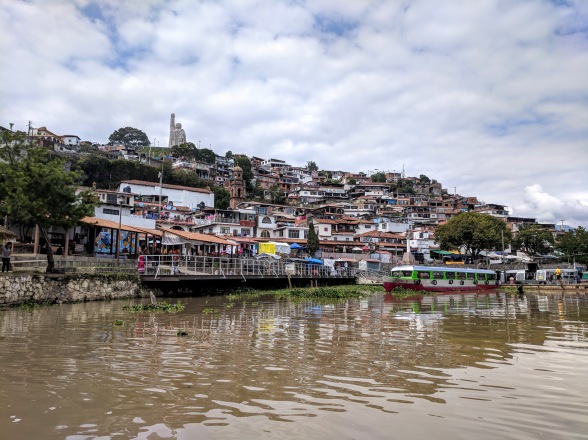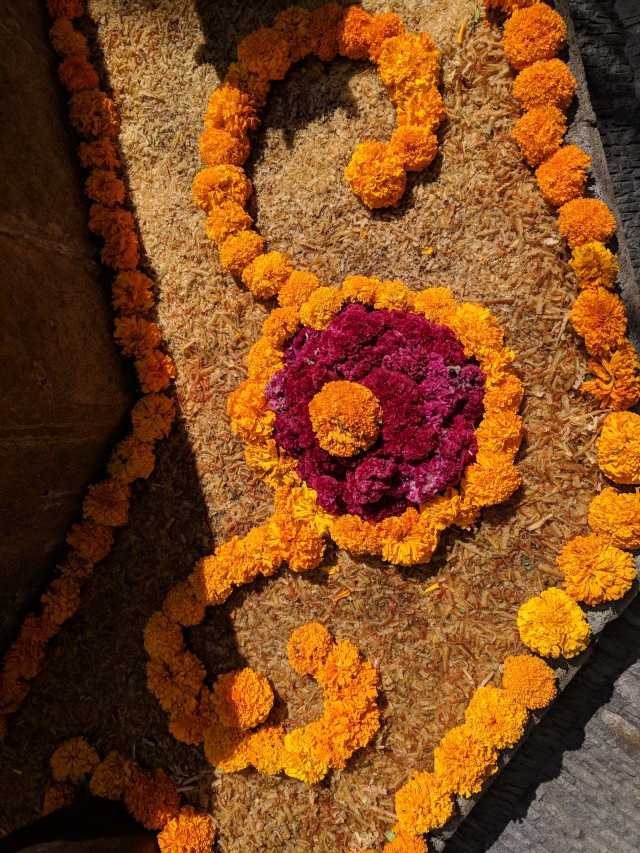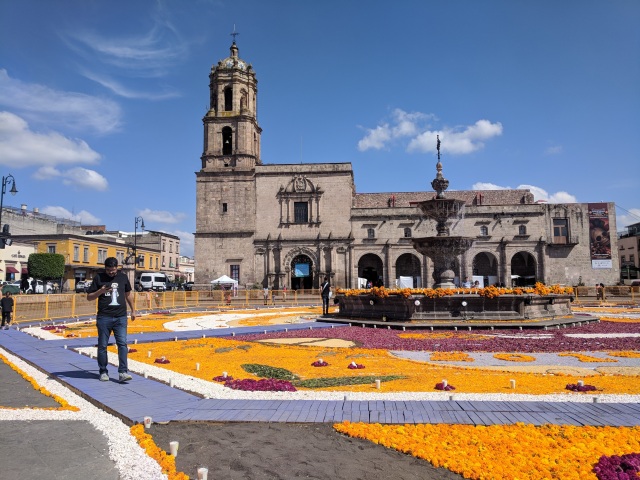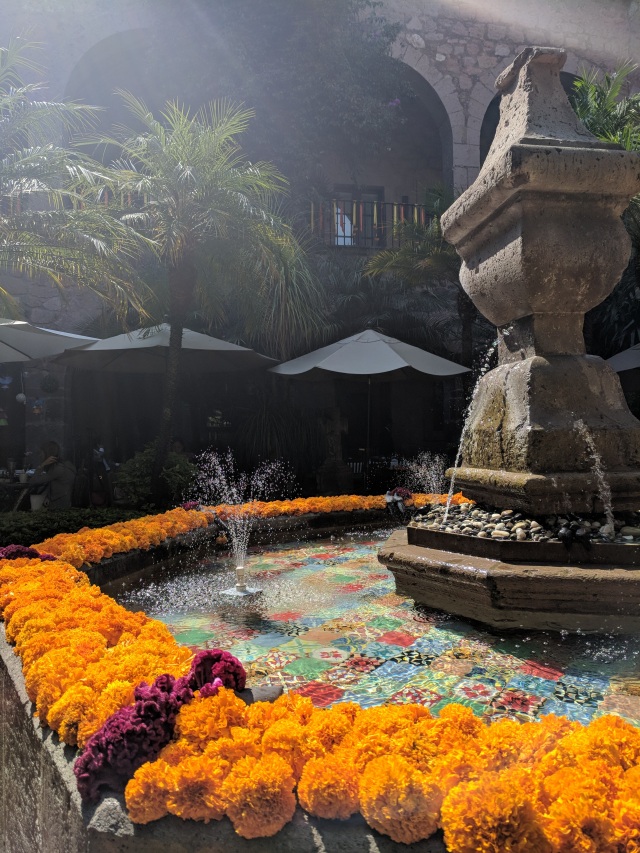Why I no longer care about my travel bucket list
I used to want to see the whole world; every mile and every inch, and take pictures until my fingers bled. I was one of those people who thought the number of countries I’d visited would determine how interesting or cultured I was. I thought that the more places that I ticked off my list, the more gorgeous shots I took, the greater life satisfaction I would experience.
The older I get though, the more I realize how little this matters.
I’ve had beautiful encounters in no-name places that I never planned to visit. I’ve had miserable experiences in big-name places that I had wanted to visit for years. And the opposite for each has also been true.
You’ve heard it before, and I’ll say it again: how much fun you have usually has little to do with the place, and everything to do with the people. You know you’re getting older when you suddenly understand that the cliches are true.
And this is what I focus on now more than ever: who am I visiting? instead of what beautiful sights will I see ?
Traveling to Mexico crystallized what I had been feeling about travel lately: a bit burnt out, feeling that everywhere I traveled to was more or less the same. Whenever I was in a tourist area, I found the same kinds of attractions, and even the same kinds of people selling the same stuff. There were the same overpriced restaurants with predictable tourist food.
Of course, this never discouraged me from traveling. It just made me think about why things were this way, and how to travel more meaningfully in the future. It’s a concept that’s always on my mind. Maybe that meant having a less consumerist mindset; focusing less on souvenirs, photos, shallow reproductions of culture.
Locals selling their own culture
For Day of the Dead, I was lucky enough to travel to Michoacan, Mexico. It’s not Oaxaca, but it has its known spots for celebrations of the holiday.
In the small town of Patzcuaro, there is a neighboring island called Janitzio where you must travel to by boat. The island is known for its winding passages that lead to the island’s high point where you can climb inside a giant statue of Jose Morelos to overlook the bay (think Statue of Liberty), and a popular pantheon (cemetery) where elaborate overnight vigils are held for Day of the Dead. The people who live there, the Purepecha Indians, have their own language and culture which is distinct from many cultures in surrounding Mexico. This fact attracts many tourists.

When we got on the boat to Janitzio, there were some musicians there, and a guy chanting all the flavors of ice cream he was selling. At a certain point, the boat stopped and turned to show us some fishermen who were out doing a day’s work. They were sitting in their blue and green boats, the butterfly nets spread over the worn boat edges like wings. Then they stood atop their vessels, wielding large butterfly nets that dwarfed their small boats. They did it with such grace, extending and lowering their nets in synchronicity, as if doing a dance they had practiced thousands of times. I was amazed by all of it, and didn’t notice that not one fish was caught. I didn’t notice that these men were not fishermen, but actors, until the moment all six fisherman paddled over to our boat, boarded it, then went around asking for tips. The only thing that was caught was me. I fell for the spectacle. The job of fisherman didn’t exist anymore, it was now entertainer.
It wasn’t always this way. Lake Janitzio used to be packed with fish and the fishermen would come back with a catch to sell on the mainland. But pollution and runoff from excessive logging, and invasive species put the lake in a danger zone. The lake is home to a special salamander, the achoque, related to the well-loved axolotl. The salamander is endangered, and Lake Patzcuaro is the only place in the world where the salamander is found. Nearby nuns who have been breeding the salamander for years to make cough syrup, are leading the project to reintroduce healthy salamanders back into the lake to restore some balance. That was one of the most interesting facts I learned about Janitzio. I almost wish that they had made some sort of PSA on the boat about this story and let tourists know what was going on, and maybe suggest ways to help.
Now there’s nothing wrong with doing what you need to do to survive. I just asked myself why? I was just sad that the lake was so polluted that it couldn’t support an industry anymore, and that the people on Janitzio had to rely on selling their culture to get by. And I can’t speak for them, on whether they enjoyed it or not, but I sensed that they were on edge, like the island kids who go around rapping for money.
Those kids were incredibly friendly, and would approach tourists talking nonstop. When one of them–a well-tanned shirtless boy of about 9–came up to me, I caught some words of a rap he was using to tell his story and then ask for money. This was an elaborate monologue too. He was eventually joined by a couple other kids who starting following us for a while: talking and rapping, talking and rapping. Those kids had some skills. But why were they so aggressive? Why the desperation? It looked like the only livelihood for islanders was either feeding or entertaining tourists, so there was a ton of competition for dollars. There’s nothing wrong with that, but when that’s the only thing there is, I worry. It wasn’t just me. They seemed stressed out, tense, on edge.
The saddest thing for me was how the community seemed resigned to it. Each maneuver manufactured, each smile and greeting practiced. They had decided this was the way to make money, and so they played up certain aspects about their culture, at other times, completely fabricating them for the excitement of outside eyes. It felt to me then, that the island was now just a business, that no remnant of the easygoing island lifestyle remained. They had sold out, and I didn’t like that I was complicit.
How Mexican even is Day of the Dead?
I also realized how few Mexicans actually celebrated Day of the Dead. I spoke with a local of Morelia, a nearby town, about Day of the Dead customs, and he said that sure, some people might visit the graveyard on November 1st, but most people just ignored it. However, in recent years because of tourism, the city started embracing the holiday, and even created an entire festival and parade. The year I visited (2019) was its inaugural year. Lucky me, right? It seems that Day of the Dead is one of those regional aspects of culture that gets overblown and becomes a concept that everyone comes to associate with the entire country.
It was funny to experience the holiday with my hosts, Mexican natives, who were seeing the festival for the first time with such excitement. Because let’s be real – parades and face-painting are FUN! Of course, I enjoyed myself at this festival and I’m glad I went; I’m not immune to the festival atmosphere and elaborate costumes, fireworks, etc., I just had no illusions that I was experiencing a “real”cultural phenomenon.



So I don’t say this to be complain-y, but just to draw attention to the fact that, I’d rather do something that exists for a purpose outside of tourist entertainment. If I wanted that I could just go to Disney (which I think is weird by the way) any day of the year. I don’t need there to be a festival to have a good time. So instead of making my decisions on where to travel based on a country’s festival calendar, I’ll make them based on whether or not I have friends there, or a reason to be there other than to “watch the show” and grab some good video.
The voyeurism of photography
To continue stories of being on boats, we were in the canals of Xochimilco and had just paid for a Mariachi band. I had a moment where I kind of zoned out and realized how commodified the whole thing was. We were tourists who had paid to be serenaded, and we were taking photos and videos to say that we had experienced it. But did we live that moment? or did we just record it? I know I sound like such a travel snob. Feel free to roll your eyes, but I tend to zone out a lot and have thoughts like these. I thought about when I look back on this moment, will I remember it fondly ? Or will I just think of it as the time I filmed a cool video?
We hadn’t made a personal connection with the Mariachis; the only connection was the camera. To them this was a job, and we were their clients. Just like the musicians on Lake Janitzio, and the severe-looking Purepecha woman selling snacks, they too just looked…well, over it. What if the mariachi guys didn’t even like dressing up or playing music for people, or what if they were having a bad day, or were part of a predatory music agency? We would never know. Because that wasn’t the agreement. They were only here to play one song, and we were there to enjoy ourselves, and pay. This is starting to sound like something else…
I started to feel awkward that I was just capturing and being a spectator rather than a participant. Something felt voyeuristic about it, not entirely pure. It made me uncomfortable. I put my camera down for the rest of the song.
So what’s the alternative?
I admit, this whole piece runs the risk of being ranty, but I want to emphasize that these are just thoughts that kept coming up while I was traveling. Does this mean that I’m boycotting all international festivals forever? Of course not; I had an amazing time taking photos of the Carnival in Venice, and loved hanging around Paris on Bastille Day. I just won’t make it the deciding factor of my travel. I think I’d rather do something a bit more authentic. Even mundane. More of everyday life of a local, less Instagram travel blogger.
Social media definitely plays a role in getting more tourists to visit a place to the point where it just becomes overblown, and nothing more than a trend. Everyone has the same pictures, and everyone is cropping out the same ugly bits, tops of other tourists’ heads, to show their followers an idealized version of the place they traveled to. I honestly cannot stomach the oversaturation of doctored images that exist on Instagram. And then come the travelers in droves, trying to recreate that perfect instashot for their followers who will then see their post and come running to do the same. Rinse and repeat. I’ll focus on making people and experiences the center of my travel instead of photos. If I find myself at a tourist mecca then great! If not, I won’t sweat it.
One sec, let me adjust my grumpy old lady glasses. Oh and did I mention I detest crowds?
Now I need to say that I have nothing against people who love Disney vacations. We all travel for different purposes, and if your purpose is entertainment and relaxation, you will find that at Disney: they’re really good at producing experiences. However, if the purpose of your travel is different; say you’re looking for a challenge, to experience a different way of life, to understand how other people live, then you’ll be looking for something maybe less exciting, but truer to life.
Is there a way for authentic communities and tourism to exist, or will there always be an element of exoticising? I ask myself this question a lot, and I wonder about more authentic and ethical ways to travel. I found that CouchSurfing has been an easy way to plug into local culture, giving travelers a ready-made group of friends who know the town and speak the language. There are a bunch of other ways to feel more integrated as a tourist, and I plan to write an article about it soon. Until then, I’ll be stewing on my thoughts.
What are some ways that you’ve found that make you feel like less of an outsider while traveling?



Hello.
Great thoughts and beautiful photos. Thank you.
Have a good day!